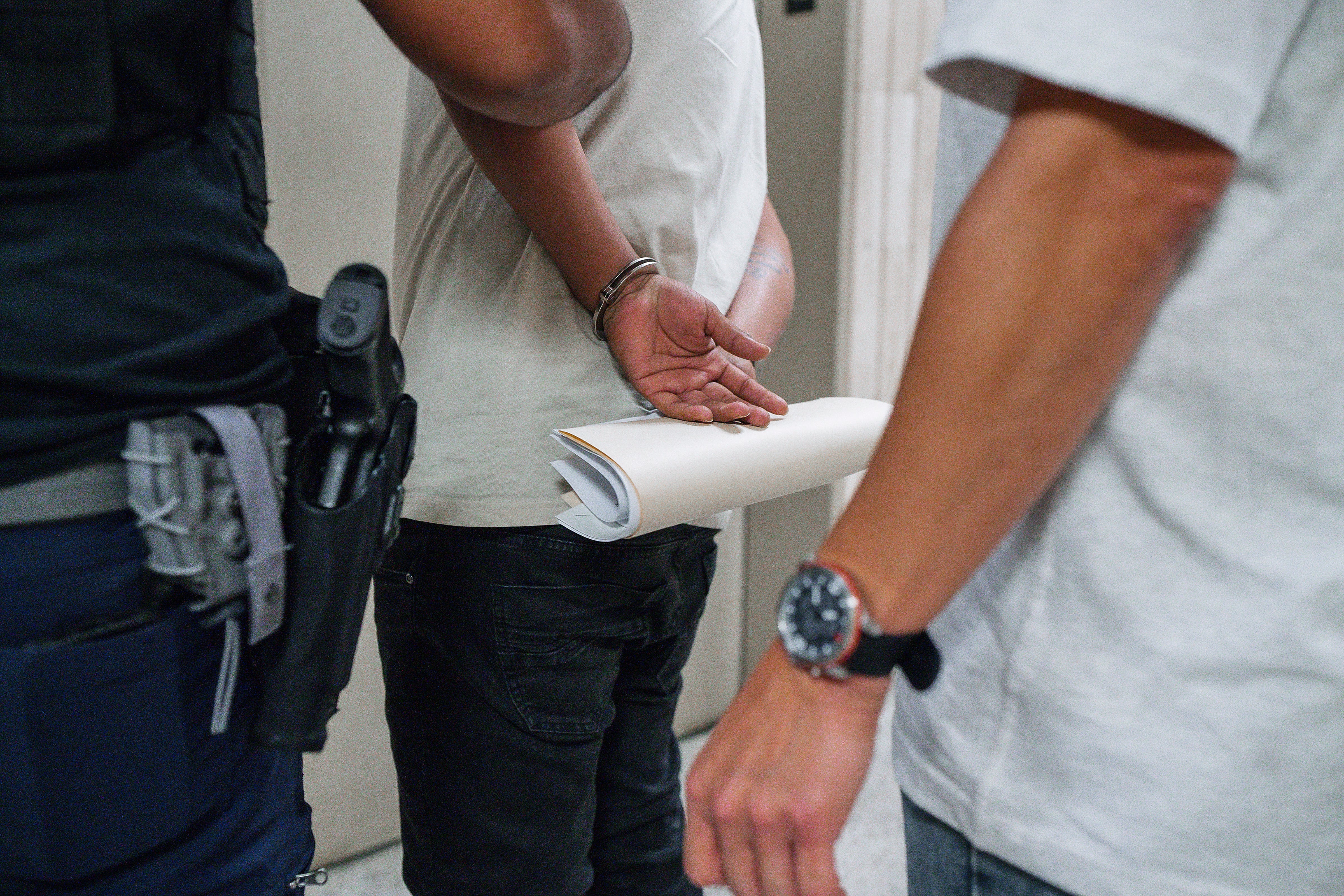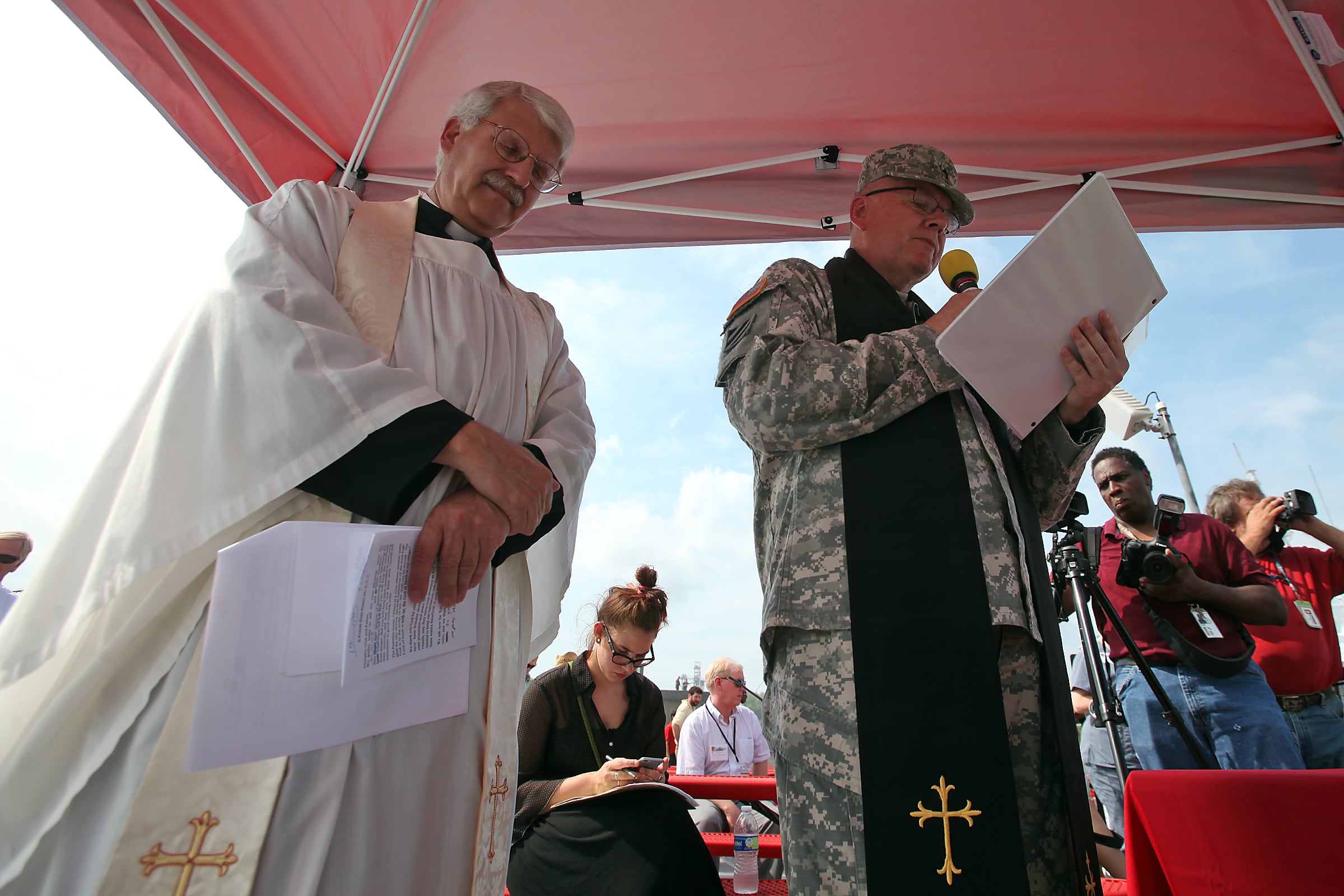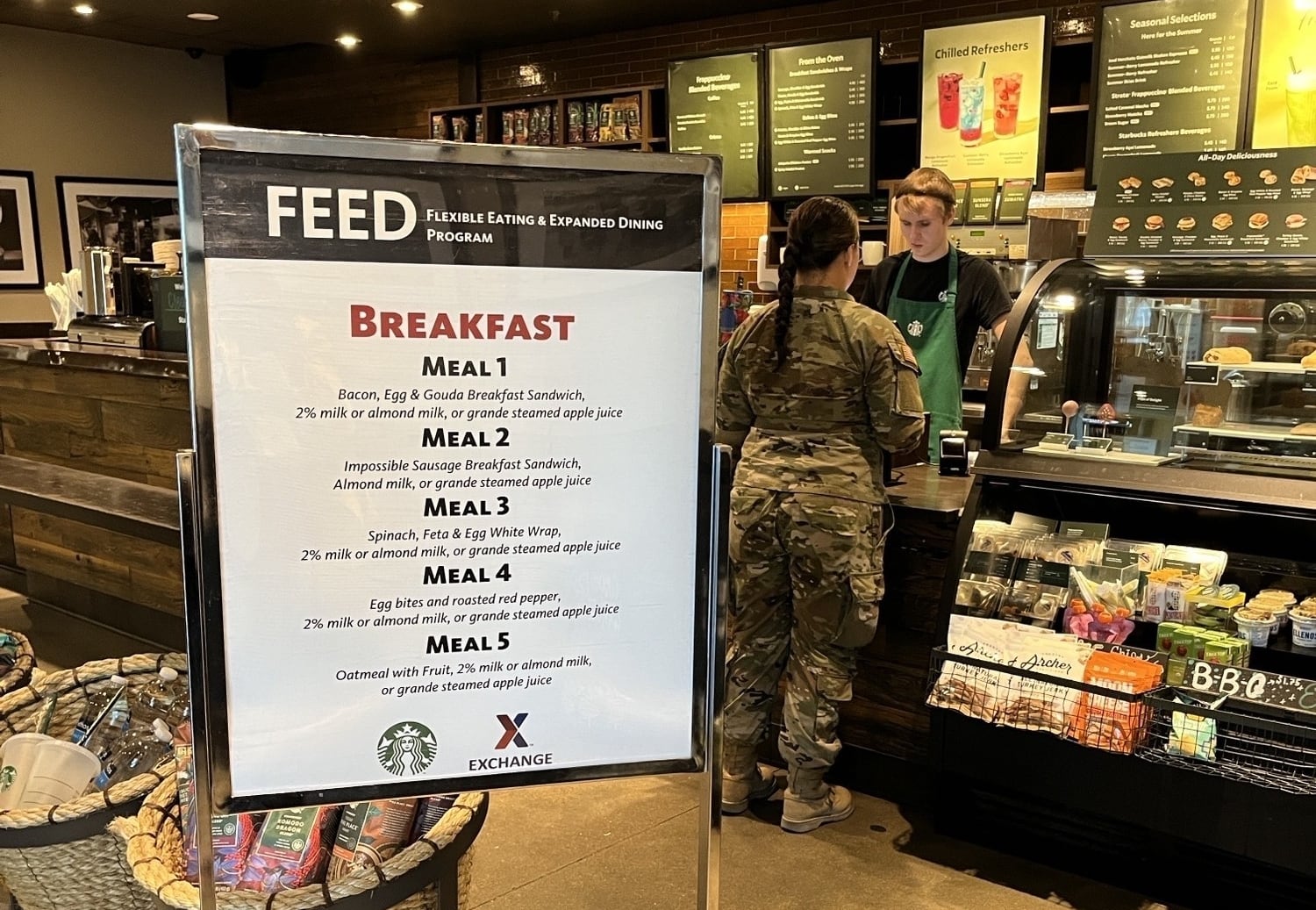In February, the Navy launches a new manning system that will better match sailors to jobs.
This detailing system will better track sailors' skills and more accurately identify and fill open billets, a capability that officials say will boost critical skills jobs and fleet manpower to new heights. , Navy officials will flip a switch, turning on a new sailor job detailing system. If all goes as planned, officials say will better fit sailors to jobs while both manning levels and readiness, fleet-wide -- even in critical skills -- reaching higher levels than ever.
Officials say the system will know you better than even your chief — and improve your shot at getting the best jobs. so if all goes well, the chances your next assignment will be your best just skyrocketed.
But pay attention as actual mileage could vary unless you follow directions.
The billet-based distribution system is six years in the making and was designed to improve fleet manpower that even three years ago struggled with thousands of open sea command jobs. The new system allows detailers and commands to track manpower down to individual billets in real-time, via an and it’s the result of some six years of development that has done what the Navy’s never before able to do — accurately track individual sailors down to the exact billet they’re currently in. And for commands, they’ll be able to track their exact manning — and thus readiness — in real time through an online system that will help them do everything from plan for billet replacements to track plan timely and properly trained replacements to tracking their female racks at sea, which officials say has always been a challenge.
While that may seem like a simple thing — it's something that Navy's never been truly able to accomplish on such a deep love.
"It's the first time that a single display has been the authoritative source of manning data from manning authorities down to the individual commands," said Rear. Adm. Ken Whitesell, assistant commander of Navy Personnel Command and senior officer in charge of distribution. "We're all seeing the exact same picture."
The system also helps the service boost meet stringent new requirements to fully man carrier strike groups before they begin the work-up cycle per the new deployment scheme, known as the optimized fleet response plan, that aims to make deployment schedules a more predictable seven-months. As the Navy continues to increase shipboard manning levels under the new optimized fleet response plan, which kicked off this year, Whitesell said, this more detailed tracking of all sailors, but also open billets and those slated to fill the gaps will immediately boost fleet readiness.
"As we work within our fit and fill, our current manning guidance under the optimized fleet manning plan, this tool melds seamlessly into that," he said.
Good news for the deckplates: You don't have to learn a new system. Instead, this will help your detailer and command better match jobs to qualified sailors. Sailors will be happier because they'll be ordered to new jobs that are a better fit for their skills.
Five things you need to know about the new set-up: The mechanics of the system, he said will work in the background, through the existing detailing system, so sailors won’t have to learn a new system to get orders — but once in their new jobs, they’ll happier because they’re being ordered to a billet that fits their skills — increasing job satisfaction.
It's like, officials say, adding a new drive train to your old car — you won't see any up differences on the outside, but under the hood, it's a whole new car.
1. Better tracking. Over the past few years, Navy personnel officials have worked with the fleet manning authorities to catalog identify every billet at every command and link them to the the sailor actually filling itthat. The stubby pencil work continues, as the Navy's 4,012 commands verify every entry in this "baseline" list.
Detailing and manning officials, Barbier says finished that initial "baseline" billet list and sent it to each of the Navy's the 1,410 commands for comments and corrections.
To date, roughly 70 percent of commands have verified the work.
Every enlisted billet in the Navy, now, has an exact set of requirements for that billet for the command to be mission ready.
"This is similar to what we do with the officers, where officers are detailed by their designators and in some cases subspecialty," Whitesell said. "Where we're able to match those up with billets that need someone with those exact requirements."
In the past, enlisted detailing hasn't been an exact science. Jobs were filled with sailors from the same rating, within a few paygrades and possibly one of the needed NECs. when it comes to enlisted sailor detailing the order for a new sailor wasn’t so exact, sometimes multiple pay grades of the same rating could fit the jobrate and pay band and possibly the most needed NEC that unit may need at that time.
"So the [incoming] sailor could show up and not be a one-for-one replacement for the departing sailor," he said.
This meant the command had to find a way to train the new sailor to meet the requirement. Sailors were diverted while en route enroute to commands, or pulled off shore duty to provide a ship or squadron a skillset they needed to deploy. No longer, officials say. This led, at times to diverting sailors enroute to other ships or commands and even pulling people off shore duty when it became evident a command might deploy with out an exact skill they needed to even leave the pier.
Now, all that’s changed and to even see billets in the system, Sailors must meet exact requirements — or very close to them — to be able to apply for a job.
"It's a match of the billet: the exact rate, paygrade and NEC," Whitesell said. "So when Sailor 'A' is detaching the unit and if that billet is coded properly — and we've been going through a baselining for the past year — than Sailor 'B' who comes in is a one-for-one replacement for Sailor 'A.'
2. Verifying your info. The new system is only as good as the data it relies on. Actually, the reality is quite close to the truth, or it will be once the Navy flips the switch. But whether you will benefit depends on some variables and most of which you have control over — your personal data.
That's because a database is only as good as the data in it, officials say. And if you're going to be a round peg in a round hole — the system needs to see you properly.
The Navy has spent years trying to define the exact requirements each Navy billet needs, sometimes defining multiple Navy Enlisted Classifications as hard and fast requirements.
That means it falls to sailors to ensure that their profiles are right, especially their Navy Enlisted Classifications. These profiles are which are pulled from official databases like PRIMS and BUPERS Online. When you see something that's inaccurate or out-of-date, it falls on you to update it.
"Missing or inaccurate information negatively impacts the system's performance, and reduces the sailor's chance of being selected for a desired position or location," Scott Barbier, who heads the Enlisted Placement Management Branch at NPC. "It's very important for sailors to ensure their data is right."
"We're trying to get more exact when it comes to replacing departing sailors at a command," said Scott Barbier, who heads the Enlisted Placement Management Branch at NPC. "As resources, get tight, were trying to make sure that we're placing the sailor in a job that gives us the most bang for the buck."
As a result, you'll only see the billets you are a somewhat close fit for these days — if you don't think you are seeing what's actually out there, or it doesn't fit you — troubleshooting starts with you.
CMS/ID pulls data from a number of Navy sources, such as PRIMS for fitness information, BOL — Bupers Online — for evals and Nave Enlisted Classifications from the electronic service jacket — to name a few examples.
But sailors can log right into the detailing system and see what's in the system.
You can check these things by logging into the detailing system, CMS/ID, and verifying your information. To do so, head to https://www.cmsid.navy.mil. At the CMS-ID Home Page, hover your mouse over "Sailor Info" and select "View My Personnel Detail." There are 14 professional items and another 11 personal ones to be checked, Barbier said.
"Some of the most important things that need to be up-to-date in the system are, for example, numbers of dependents they have, because that effects the cost of the order and whether or not they an exceptional family member. We need to know that, because that impacts where they can be stationed, sometimes," Barbier said.
In addition, security clearance and language skills can be critical, too.
And, of course, primary and secondary Navy Enlisted Classifications are extremely important now, too, as many billets are coded with them — and having the right alpha-numeric codes in the system could take you from a slam-dunk for the job, to not seeing the opening at all.
To see your data requires using a CAC-enabled computer and head to https://www.cmsid.navy.mil. When you hit the CMS-ID Home Page, hover your mouse over "Sailor Info" then select "View My Personnel Detail."
Under that detail, there's 14 professional items and another 11 personal ones to be checked.
"Sailors can validate their information right in the detailing system, online," Barbier said. "If there's problems, there's a website they can go to and fix those issues."
3. Command input. Once the system is unveiled, it's up to your command to maintain it. With the initial rollout of the billet database that makes this new system runs, commands will be charged with maintaining it’s accuracy, though Barbier says Personnel Command is there to help however they can.
NPC’s placement coordinators will work directly with a new command job called an Enter your command's "activity manning manager." This new post will work directly with NPC's placement coordinators to make changes to billets and assist in tracking.
Barbier said it was deliberately given an new name to give leadership a wide latitude on how to implement the job between their own lifelines.
"We want the commanding officer to decide who does this job. In many cases, a larger command has a personnel officer and they may do it," Barbier said. "At smaller commands it could be their [chief personal specialist], while others may have their career counselor do it."
NPC can tailor the command’s access to meet how the CO wants to break down the work.
"We set it up so a command can have an [overall] activity manning manager that sees everything," Barbier say But they can also view only access for others who won't see the sensitive information about the individuals — not every one needs to see everyone's fitness reports — so the commanding officer decides."
4. Navy Counselors. For the nearly 700 rated NC’s and the countless other collateral duty and departmental career counselors, your job will change for the better. When this database starts up goes live, one of the main documents NC’s use in their jobs — the Enlisted Distribution Verification Report — or EDVR, goes away.
In its place, Barbier says, will be a web-based real time command information system that tracks billets and manpower in real-time. to track the manning and distribution world for their command.
"For them, the impact of this will be significant," he said. "They'll see information about prospective losses, all sailors currently on board and what billet they are filling."
Once detailers choose a sailor for the gains to the command, the NC and command leadership will be able to see all information about the sailor ordered inbound — everything in their CMS/ID profile — but they’ll only see the personal data once the sailor is officially inbound.
"When the sailor is in the negotiation to come to a command, they'll see that a sailor has been put in a given billet, but they won't see any data on who it is until the orders are actually released."
That's because until the orders are finally released, anything can happen, Barbier said. They might not screen for the sea duty or an overseas assignment, for example.
5. Next steps. This latest improvement to detailing enlisted sailors is a far cry from the detailing system of just two decades ago, when it this came down to calling your detailer, who told you your choices for your next job over the phone. when you simply called your detailer on the phone — and he or she told you the choices available.
The Navy has allowed sailors to shop online for their next command since the late 1999, when the Job Advertisement Selection System came online and continued with CMS/ID in 2007.
Making the new system accurate depends on sailors and commands — and there's work to be done. As of Jan. 28, only about a quarter of the Navy's commands have requested access to the new system.
JASS first allowed sailors to see what was available — with out the detailer filter and CMS/ID brought with it a sailor's ability to actually apply for jobs, too.
The latest iteration will take this to a new level of accuracy in trying to fit the sailor to the job they're best suited for.
But there's still work to be done by individual sailors as well as commands to get ready for the switch, which takes place in early February, in time for the Feb. 10th opening up of the monthly job requisition cycle.
Commands too will switch to a whole new world of managing their enlisted manning, canning the EDVR — Enlisted Distribution Verification Report a static monthly snapshot in time.
Instead, they'll have a real-time, Web Based tracking system shows all their sailors and the exact billets they're filling.
The problem is, only about 25 percent of the Navy's 1,410 commands have yet to request access to the system — and that's a problem.
"When the fleet gets in and uses it, this tool will surprise commands with how easy it is to manage their people and billets," said Scott Barbier, who heads, Enlisted Placement Management Branch at NPC. "The only way to get use is to have access — and the one concern I have right now is we’re not seeing requests for access to the system as quickly as we would like. Commands need to request access and get up to speed as they’ve got about three weeks to do it."
Here's a look at what sailors and leaders need to know.
Mark D. Faram is a former reporter for Navy Times. He was a senior writer covering personnel, cultural and historical issues. A nine-year active duty Navy veteran, Faram served from 1978 to 1987 as a Navy Diver and photographer.





